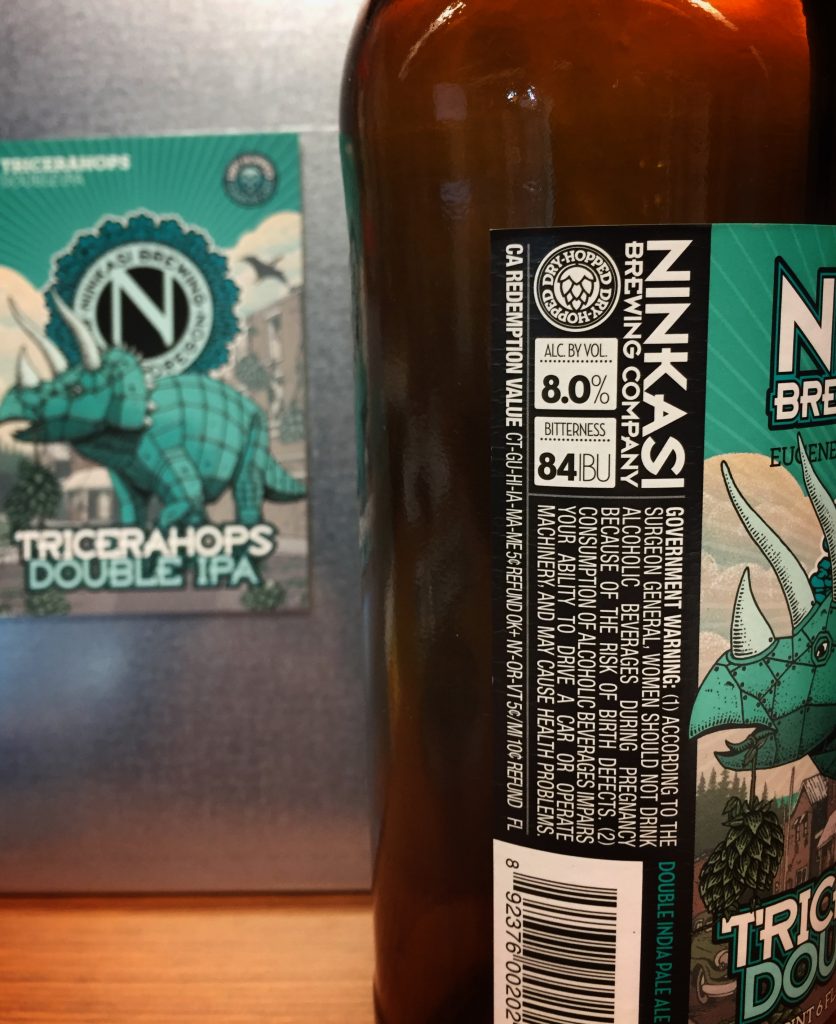[This post is an archived article from NinkasiBrewing.com that is no longer active. As an employee I wrote them for the blog, but all links have been deleted and these are being posted far after the original post]
I used to be a bartender in a suburban area new to “craft brewing” and many of our patrons were just realizing that there was more flavor to beer than the barley pops from our parents’ fridge. Some of the most frequently uttered phrases upon ordering were, “oh I don’t like hoppy beer” or “give me whatever IPA has the most IBUs.” Depending on the customer, sometimes I’d just pick one of the eight beers we had on draft I thought best fit their needs, or if lucky we’d have a nice conversation about what they were really looking for. Nobody really wants the bitterest beer they can get and those who say they don’t like hoppy beer often times think hoppy has to mean bitter.
So what do we really mean when we say “hoppy?” Let’s crack open a metaphorical (or actual) IPA and dig in!
To oversimplify, we can say that “hoppier” means “more hops” which while true doesn’t help us understand how that impacts taste.
Hops provide bitterness, flavor and aroma. In our brew houses we accomplish this balancing act in a handful of ways.
- Hops added early in the boil become bitter and balance the malty sweetness.
- Hops added later in the boil hops contribute more flavor than bitterness
- Once the boil stops we whirlpool and add more hops to obtain flavor and aroma.
- “Dry hopping” is our final step in the quest for hop potential; we add a hefty charge of hops straight into our fermenter resulting in heaps of aroma, but a minimal impact on bitterness.
So clearly “more hops” can mean a lot of different things. How do we help you figure out what this means in a bottle of Ninkasi? By putting it in plain view on our labels!
Check your beer label!
All of our product labels contain info that guides you to what you were craving and in our hop-forward products we take it a step further. Beers like our Pacific Rain Northwest Pale call out specific hop varieties on the front of the label, so you can find your favorite hop flavor profile (as noted in a recent post: Dissecting Three Favorite Hop Varieties). Looking for the most hop aroma you can get? Look for our “dry-hopped” icons on the side of bottles, six pack carriers and cases and you can ensure you’re in for a kick in the olfactory. So now that we’ve got a better idea of how hoppy happens, how can we be sure the beer we choose isn’t too bitter? IBUs! (Kind of.)
What does IBU mean?
IBU is short for “International Bitterness Units” which typically runs a scale of 0-100. Lower numbers indicate less present bitterness and 90-100 is about as high as our tongues can detect. Because the brewing industry has taken to using this as a reference, we eventually associate that beers like our Red IPA Dawn of the Red at 66 IBU have more bitterness than our lager, Helles Belles, at 28 IBU. However chasing the number of IBU to determine hoppiness is like reading nutritional information to determine the flavor of food. Until we adopt something like Bitterness Unit to Gravity Unit Ratio (and unfortunately there’s a few ways to interpret that too!) we’ll use IBU as the best barometer we can. It’s also why, as noted above, we go through the process of putting more info than just IBU on our labels.
So the next time we stroll into our favorite beer bar, you’ll now be armed with better info to help order a beer that is just what you’re looking for. And when looking at that 22 ounce bottle of Tricerahops in the grocery store you can rest assured seeing 84 IBU and “dry-hopped” on the label you’re getting the hoppy beer experience you were seeking! Got questions about how we measure IBU or other hop-related questions? Let us know in the comments!

